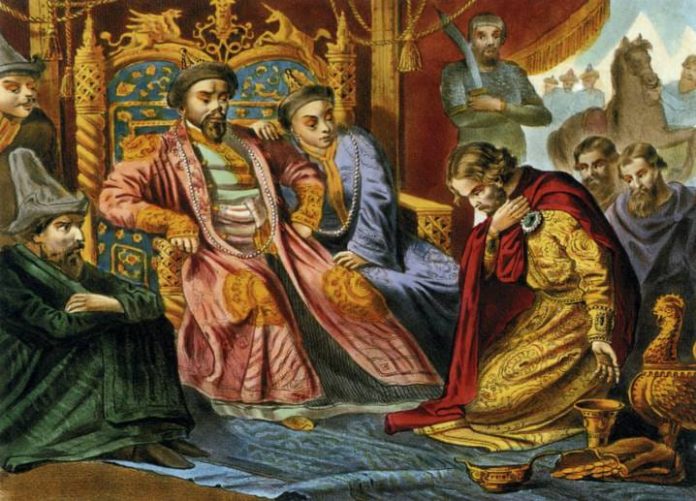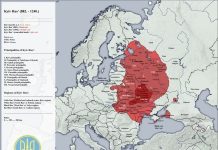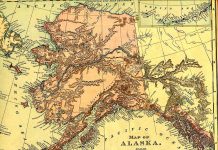Harvard academic Dr. Richard Pipes who specialized in Russian history described in his most famous book the way Moscow became the capital of the realm that would become Muscovy first, and later – ‘Russia’. It is very important to see the ways and methods by which it achieved that status because it explains a lot about Muscovy’s later history and sheds new light on its current war on Ukraine. Here are some quotes:
“[Alexander] Nevsky and even more his successors… assumed on behalf of the Horde the principal administrative and fiscal responsibilities over Russian territories, as compensation for which they gained for their principalities relative freedom from Mongol interference and for themselves influence at Sarai; the latter proved an immensely valuable weapon with which to undermine rival princes. As long as the money kept on being accurately delivered and the country remained reasonably peaceful, the Mongols had no reason to tamper with this arrangement. In the policy of collaboration, no one excelled the branch of Nevsky’s family ensconced in what in the thirteenth century was the insignificant Moscow appanage carved out in 1276 for Nevsky’s son, Danil Aleksandrovich. Danil’s son, Iurii, managed in 1317 to secure for himself the hand of the khan’s sister and the title to Vladimir to go with it. Eight years later he was murdered by the son of the prince of Tver, whom the Mongols had executed at his, Iurii’s, instigation, whereupon Moscow (without Vladimir and the Grand Princely title, however) passed to his younger brother, Ivan Danilovich, later designated Ivan 1 of Russia. The new ruler proved an extraordinarily gifted and unscrupulous political manipulator. By one scholar’s estimate, he spent most of his reign either at Sarai or en route to or from it, which gives some idea how busy he must have been intriguing there. An astute businessman (the population nicknamed him ‘Kalita’ or ‘the Moneybag’) he amassed what by the standards of the time was a sizable fortune…
Ivan’s most serious rival for Mongol favour was the prince of Tver, who, after Ivan’s elder brother Iurii’s death, had succeeded in wresting from Moscow the title of Great Prince. In 1327, the population of Tver rose against the Mongols and massacred a high-level deputation sent from Sarai to oversee the collection of the tribute. After some hesitation, the prince of Tver sided with the rebels. As soon as this news had reached him, Ivan left for Sarai. He returned as the head of a combined Mongol-Russian punitive force which so devastated Tver and a great deal of central Russia besides that the region was not yet fully recovered half a century later. As a reward for his loyalty, the Mongols invested Ivan with the title of Great Prince, and appointed him Farmer General of the tribute throughout Russia. This was undoubtedly an expensive privilege since it made Ivan responsible for the arrears and defaults of others, but one that offered him unique opportunities for meddling in the internal affairs of rival appanages. Control of the tribute meant in effect monopoly of access to the khan’s court. Taking advantage of it, Ivan and his successors forbade the other princes to enter into direct relations with any other state, the Horde included, except through the agency of Moscow. In this manner, Moscow gradually isolated its rivals, and moved to the forefront as the intermediary between the conqueror and his Russian subjects. The Mongols had no cause to regret the favours they had heaped on Ivan…
The Golden Horde was the first centralized political authority which the Russian princes met face to face. For a century and a half, the khan was the absolute master of their fate. His power and majesty all but erased from memory the image of the Byzantine basileus. The latter was a distant thing, a legend: not one appanage prince had ever set foot in Constantinople; the road to Sarai was only too familiar to them. It was at Sarai that they had an opportunity of observing at close hand the operations of absolute monarchy, of ‘authority with which one cannot enter into agreements but must unconditionally obey’. Here they learned how to impose taxes on households and commercial transactions, how to conduct diplomatic relations, how to operate a courier service, and how to deal with insubordinate subjects.
The Russian vocabulary retains unmistakable traces of this influence. Its word for treasury – kazna – derives from its exact Mongol-Tatar equivalent, and so do the cognate terms designating money and customs (denga and tamozhnia), both of which are adapted from tamga, which under the Mongols meant a government seal placed on merchandise as proof that taxes on it have been paid. The postal service linking Moscow with the provinces (iamskaia sluzhba) was nothing but the Mongol yam under new management…
Most importantly, perhaps, the Russians learned from the Mongols a conception of politics which limited the functions of the state to the collection of tribute (or taxes), maintenance of order, and preservation of security, but was entirely devoid of any sense of responsibility for public well-being. During the time it served as the Horde’s agent in Russia, Moscow had to build up an administrative apparatus geared to that which it served. Given the innate conservatism of political institutions, it is not surprising that much of this structure remained intact even after Muscovy had become a sovereign state. Thus the tribute which the Moscow Great Prince had collected for the khan was not done away with after the Russians emancipated themselves from the Mongols; instead, it became a tax levied on behalf of the Great Prince…
There can be scarcely any doubt that domination by a foreign power, which in its worst form lasted for a century and a half, had a very debilitating effect on the political climate of Russia. It tended to isolate the princes from the population further than they were already inclined to be by the workings of the appanage system, to make them less conscious of political responsibilities, and yet more eager to use power to accumulate private properties. It also accustomed them to regard authority as by its very nature arbitrary. A prince confronted with popular dissatisfaction had merely to threaten with calling in the Mongols to secure obedience – a practice that easily grew into habit. Russian life became terribly brutalized, as witnessed by the Mongol or Turco-Tatar derivation of so many Russian words having to do with repression, such as kaiidaly and kaidaly (chains), nagaika (a kind of whip) and kabala (a form of slavery). The death penalty, unknown to the law codes of Kievan Rus’, came in with the Mongols. During these years, the population at large first learned what the state was; that it was arbitrary and violent, that it took what it could lay its hands on and gave nothing in return, and that one had to obey it because it was strong. All of which set the stage for the peculiar type of political authority, blending native and Mongol elements, which arose in Moscow once the Golden Horde began to loosen its grip on Russia.” [Russia Under the Old Regime]
Majority of Russians are Tartars fond of distruction, wrote Fyodor Dostoyevsky >










